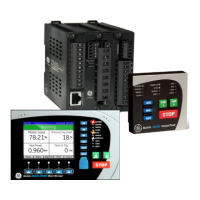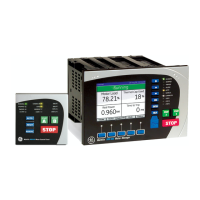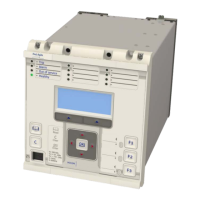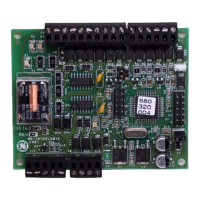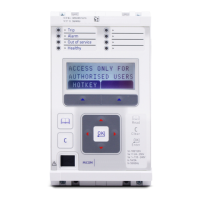Faults involving three phases and phase to phase faults do not require special attention; tripping is in accordance
with zone impedance limits, fault direction, and zone time delay.
Faults on isolated or compensated earthed systems involving single-phase to earth, or cross-country faults do
require special attention.
6.2.1 SINGLE-PHASE TO EARTH FAULTS ON ISOLATED OR COMPENSATED SYSTEMS
On isolated or compensated earthed systems, a single-phase to earth fault does not lead to a short circuit as only
a small capacitive or compensated current flows to earth. In most cases, the earth fault will self-extinguish. In the
remaining cases, the system can continue to operate with the earth fault present, until the fault is located and
removed by isolating the faulted feeder. Indication of the earth fault can be provided by Wattmetric function, or a
Transient Earth Fault Detection function (TEFD).
For a fault on a solidly earthed network, distance protection is required to trip as quickly as possible to isolate the
fault. This is for all fault types including a single-phase to earth fault. In isolated or compensation-earthed
systems, a single-phase to earth fault needs to be correctly identified for network control, but instantaneous
tripping should not happen since the system can be (at least for a certain period of time) remain connected - as
the magnitude of the fault current will not be very high - and/or the fault will in most cases self-extinguish.
Moreover, for a solid earth fault, the voltage on the faulted phase may be 0V across the whole of the galvanically
connected network. Using a collapsed voltage in conjunction with the load current would give measured
impedance values on the faulted phase of 0Ω across the network, causing incorrect, and uncontrolled, tripping.
Since distance protection should not operate for a single-phase to earth fault, pick up of fault detection elements
under single-phase to earth fault conditions must not lead to tripping. This can be a particular problem on large
isolated networks, where capacitance to earth is large. When a single-phase to earth fault occurs, the voltages on
the unfaulted phases increase relative to earth, and so too do the associated capacitive earth currents. During the
initial half cycle after fault inception, the arc-ignition earth current amplitude of the disturbance may be much
higher than nominal current, with a frequency close to the nominal system frequency. To prevent incorrect
detection during single-phase to earth faults, it is common practice to delay single-phase to earth fault detection
on isolated or compensation-earthed systems by a short delay. This delay is bypassed if the fault evolves into a
double earth fault.
6.2.2
CROSS-COUNTRY FAULTS ON ISOLATED OR COMPENSATED SYSTEMS
While a single-phase to earth fault is present on an isolated or compensation earthed system, the phase to earth
voltage on the healthy phases rises by a factor of √3. Due to this rise, double earth faults (or cross-country faults)
may result. The double earth fault is similar to a two-phase fault; however, for the double earth faults, the fault
path is from one earth-fault location to another, via earth. The second fault may be anywhere on the system,
depending on where the weakest point in the insulation is located.
The likelihood of a double earth fault increases as the size of the network increases. The protection strategy
usually applied for cross-country faults is to isolate one of the fault locations, with the expectation that the second
fault location will then self-extinguish similar to a single-phase to earth fault. The faulted line can then be tripped
manually once the fault location has been identified. Distance protection applied to isolated systems must have a
so-called double earth fault phase preference, which selects a predefined phase earth loop for measurement
across the entire galvanically connected network.
In the case of cross-country faults, measurements from the phase to phase loops between the two fault locations
do not produce useful results as the phase currents belong to different short circuit loops. For the second fault,
earth loops will measure the fault impedance more accurately. For a cross-country fault, all devices across the
network should follow either a so-called "cyclic" logic or an "acyclic" logic to select a phase preference for the
impedance measurement. This is used to determine which part of the system should be isolated by three-phase
tripping. Tripping will allow the rest of the network to continue to operate (single earth-fault present, but supply
maintained). Then, when the single phase-earth fault has been located, the faulted section can be tripped
manually.
The most commonly used phase preference logic is C(A) acyclic (that is C before A before B), but other preferences
can be used.
P543i/P545i Chapter 7 - Distance Protection
P54x1i-TM-EN-1 183
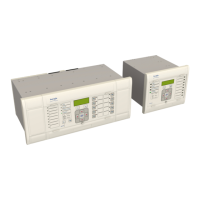
